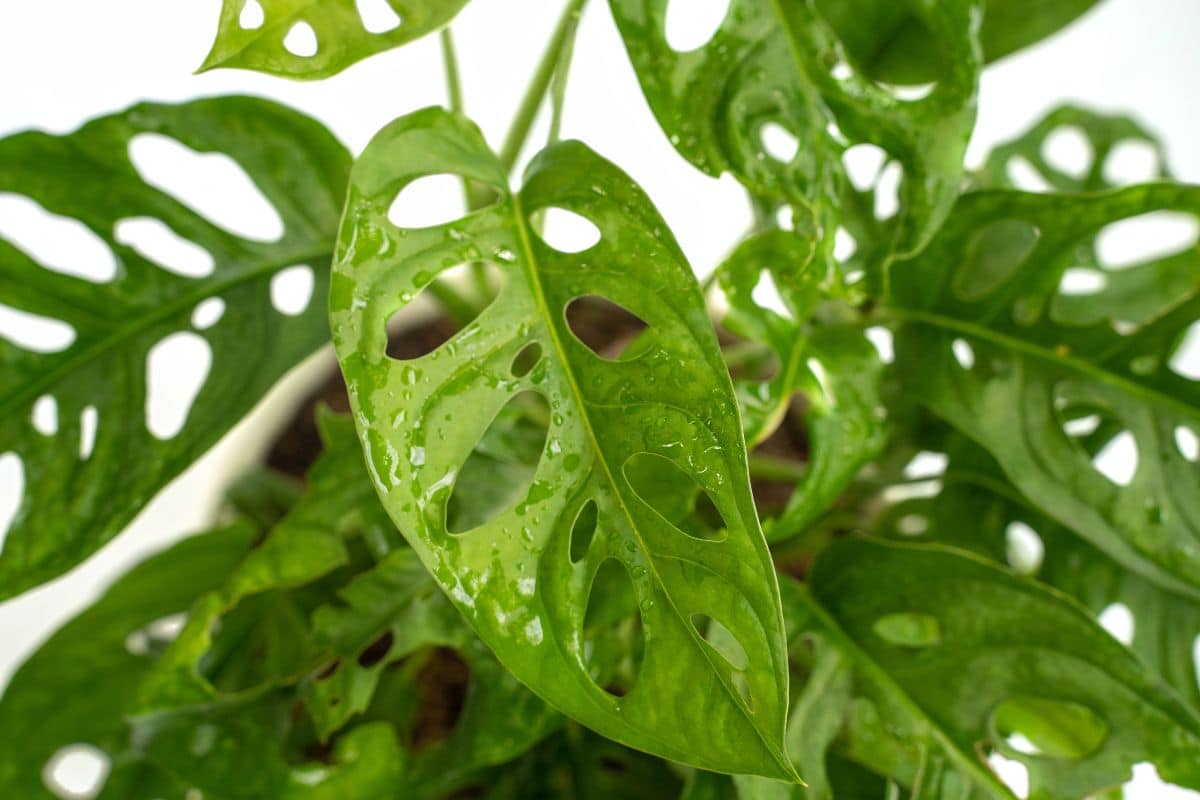The Swiss cheese plant, scientifically known as Monstera deliciosa, has become a beloved houseplant for many indoor gardening enthusiasts. With its distinctive fenestrated leaves and tropical appearance, it brings a touch of exotic beauty to any space. But when it comes to care practices, particularly misting, plant owners often wonder what’s best for this popular houseplant.
Misting and humidity needs of Swiss cheese plants
Swiss cheese plants naturally thrive in tropical rainforest environments where humidity levels typically range between 60-80%. In these native habitats, they receive moisture not only from the soil but also from the surrounding air. When we bring these plants into our homes, recreating appropriate humidity becomes an important aspect of their care.
Misting can be beneficial for Monstera deliciosa, especially if you live in a region with dry air or during winter months when indoor heating systems reduce humidity. However, it’s important to understand that misting alone isn’t a complete humidity solution for these tropical beauties. The water droplets from misting evaporate relatively quickly, providing only temporary relief.
For optimal care, consider incorporating misting as part of a broader humidity management strategy. Many experienced plant enthusiasts recommend misting Swiss cheese plants every 2-3 days, preferably in the morning. This timing allows any excess moisture on the leaves to evaporate during daylight hours, reducing the risk of fungal issues.
When misting your Monstera, use room temperature water and aim to create a fine mist that gently settles on the leaves. Avoid soaking the plant, as constantly wet foliage can lead to problems. If you’re also growing other humidity-loving plants like moth orchids that require careful moisture management, you might establish a regular misting routine for multiple plants simultaneously.
Alternative humidity methods for Monstera plants
While misting offers some benefits, Swiss cheese plants often need additional humidity support, especially in drier environments. Several effective alternatives can provide more consistent moisture levels than misting alone:
- Humidity trays – Place pebbles in a shallow tray, add water just below the top of the pebbles, and set your plant pot on top
- Grouping plants together – Creates a microclimate as plants naturally release moisture through transpiration
- Room humidifiers – Provides consistent humidity control for larger spaces or multiple plants
- Bathroom or kitchen placement – Takes advantage of naturally higher humidity in these rooms
- Terrariums or glass enclosures – Creates mini greenhouse effects for smaller plants
Many plant enthusiasts find that combining occasional misting with one or more of these methods provides ideal conditions. For instance, you might place your Monstera in a naturally humid bathroom and mist occasionally, or use a humidifier in drier rooms while still incorporating periodic misting.
If you’re creating an office garden with various humidity-loving plants, a small humidifier might be the most efficient solution, supplemented with occasional misting. Unlike some edible plants like basil that requires specific moisture management, Monsteras are somewhat adaptable but clearly benefit from consistent humidity.
Signs your Swiss cheese plant needs more humidity
Your Monstera will communicate when humidity levels aren’t meeting its needs. Being attentive to these signals helps you adjust your care routine accordingly:
The most common indicators of insufficient humidity include brown leaf edges or tips, which occur when the air is too dry, causing moisture to evaporate from the leaf margins. You might also notice curling or crisping leaves that feel papery rather than supple and smooth.
Another telltale sign is slower growth or smaller leaf development. Without adequate humidity, your Swiss cheese plant may struggle to produce the dramatic leaf fenestrations (holes) that make it so distinctive. New leaves might emerge with fewer holes or remain smaller than expected.
If you observe any of these symptoms, consider increasing humidity through more frequent misting or implementing one of the alternative methods mentioned earlier. Unlike seasonal garden flowers that adapt to outdoor humidity fluctuations, indoor tropical plants like Monstera need our help maintaining appropriate moisture levels year-round.
When adjusting your plant’s environment, remember that balance is key to successful Monstera care. While these plants appreciate humidity, they also need proper air circulation to prevent fungal issues. This is especially important if you’re also growing other plants nearby, as some combinations may create unfavorable conditions. For instance, certain flowering plants can negatively impact neighboring species through various mechanisms.
Best practices for misting and overall care
To properly care for your Swiss cheese plant, integrate these misting and humidity practices with other essential care elements:
- Mist 2-3 times weekly, preferably in mornings, using room temperature water
- Position your plant away from heating vents or air conditioners that can dry the air
- Maintain temperatures between 65-85°F (18-29°C) for optimal growth
- Water when the top 1-2 inches of soil feels dry to the touch
- Provide bright, indirect light – avoid direct sunlight which can scorch leaves
When misting, use filtered or distilled water if possible, as tap water may contain minerals that can leave deposits on the beautiful foliage. Unlike some edible plants like basil that has specific watering requirements, Monsteras benefit from both soil moisture and atmospheric humidity.
During periods of active growth (spring and summer), your Swiss cheese plant may benefit from slightly more frequent misting. In winter, when growth naturally slows, you can reduce frequency while still monitoring humidity levels. This seasonal adjustment helps mimic the plant’s natural growth cycles and supports overall health.
If you notice any sign of pests or disease, temporarily suspend misting until the issue is resolved, as moisture on leaves can sometimes exacerbate certain problems. While generally resilient, Monsteras can occasionally experience issues similar to those affecting other plants – even unexpected problems like those seen in hollow heart potatoes caused by irregular growing conditions.
With proper attention to humidity and other care factors, your Swiss cheese plant will reward you with impressive growth, dramatic fenestrated leaves, and many years of tropical beauty in your indoor space. The extra effort to maintain proper humidity through thoughtful misting and complementary methods makes all the difference for these stunning tropical treasures.

